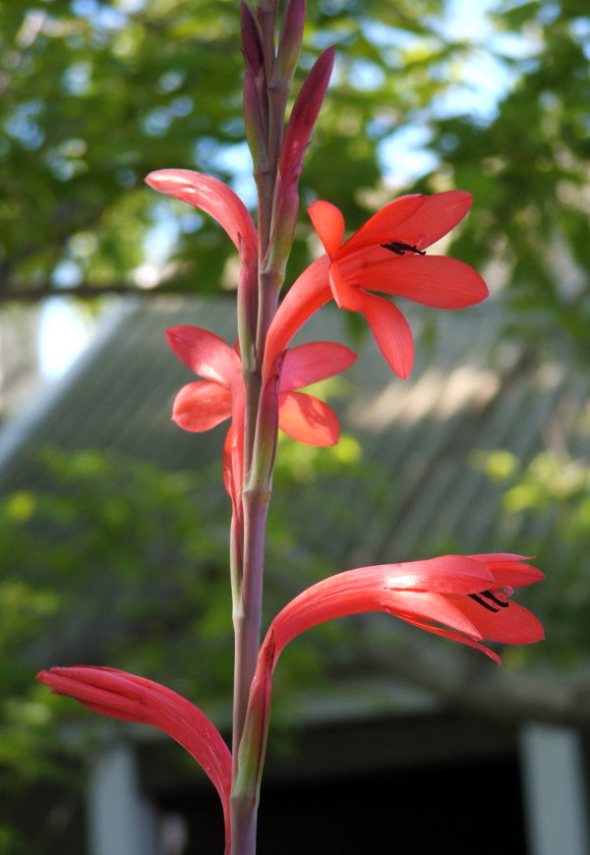Watsonia coccinea
Posted: October 19, 2019 Filed under: Botany | Tags: botany, Iridaceae, Watsonia Leave a commentWatsonia coccinea Herbert ex Baker is native to the South-western Cape in seasonally wet sites on sandy flats.
It has been cultivated in Australia since the 1840s, sometimes under the misapplied name of W. humilis. The earliest recorded importation from the Cape was by Alexander Macleay of Elizabeth Bay via Captain Farquard Campbell in 1838. The specimen illustrated here was purchased from Tesselaars nursery in Victoria in 2002.

In cultivation it grows to 40 cm tall, exceptionally to 1 metre but never with more than 12 flowers. The bright scarlet perianth has an arched, narrow cylindrical tube 4-5 cm long marked internally with six darker red lines, and hooded lobes 24 to 28 mm long.
W. coccinea flowers later than many of the winter-growing watsonias, in late October and consequently the flowers are vulnerable to damage by thrips. It is less useful in the garden than the small forms of W. meriana for this reason, and because it is a “shy bloomer” with some full-sized corms producing only foliage if planted too densely or given less than full sunlight during the winter. It has apparently contributed its flower shape and warm colouration to a few of the cultivars bred by Cowlishaw and Cronin in the early 20th century, crossing with larger plants derived from W. borbonica.
References
Goldblatt, P. (1989) The genus Watsonia. 148 pp. (National Botanic Gardens: Kirstenbosch) ISBN 062012517
Macleay, A. (1843) Plants received at Elizabeth Bay. (Ms in Mitchell Library, Sydney, 2009/115).
